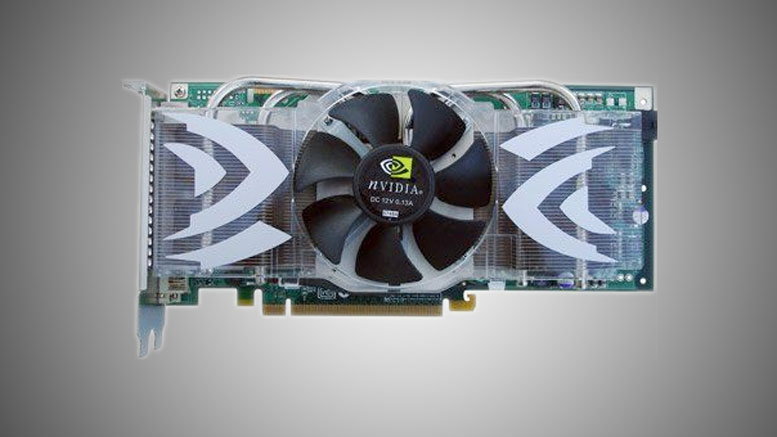As video game technology continues to evolve, it’s essential to pause and appreciate the milestones that have shaped the industry. One such milestone occurred 20 years ago with the launch of the Nvidia GeForce 7800 GTX. Once a titan of the gaming world, this graphics card was not only revolutionary for its time but also set the stage for future advancements in graphics technology. As we explore the legacy of the GeForce 7800 GTX, we’ll uncover how it redefined gaming performance and technology with its innovative features.
A Groundbreaking Launch
When the GeForce 7800 GTX was unveiled, it marked a significant leap forward in graphics technology. Priced at $599, a steep cost for consumers in 2005, it featured the new G70 GPU, which boasted a staggering 302 million transistors. The card was designed on a 110nm process, allowing for greater efficiency and performance compared to its predecessors. With 24 pixel shaders and 8 vertex shaders, the 7800 GTX provided a noticeable enhancement in rendering capabilities.
This card allowed gamers to experience high dynamic range (HDR) lighting, a technology that enhanced the visual quality of various titles, making environments look more realistic and immersive. The addition of 256MB of GDDR3 VRAM meant that gamers could handle more demanding graphics without compromising performance. Additionally, the introduction of Scalable Link Interface (SLI) technology enabled users to connect multiple GPUs, significantly boosting performance for those willing to invest in additional units.
Performance Comparison and Competitors
The GeForce 7800 GTX was not only revolutionary in its own right, but it also faced stiff competition from ATI’s Radeon R400 architecture. In various benchmarks, the 7800 GTX consistently outperformed its rivals, marking it as a champion in the graphics card market. Later in 2005, a 512MB version of the 7800 GTX was released, further solidifying its dominance. In a review by Tom’s Hardware, the card was crowned the “new graphics champion,” showcasing its ability to handle various tasks and gaming experiences with ease. The added VRAM and improved core and memory clocks made it an attractive option for gamers looking for top-tier performance.
In addition, the 7800 GTX’s development laid the groundwork for future technologies, including the introduction of multi-GPU setups and enhancements in VRAM capacities. According to data from Statista, the global graphics card market has grown tremendously since the release of the 7800 GTX, indicating a sustained demand for high-performance graphics solutions.
Legacy and Modern Relevance
Fast forward to today, the GeForce 7800 GTX is primarily significant for those looking to build retro gaming systems or for collectors who appreciate its historical value. While it holds a nostalgic charm for many gamers, it’s important to note that its performance falls short by today’s standards. With official driver updates ceasing over a decade ago, modern Windows titles and advanced graphics APIs, such as DirectX 12, are beyond its capability, limiting its use to older games optimized for DirectX 9.0c.
Interestingly, the technology behind the GeForce 7800 GTX also found its way into popular gaming consoles. The PlayStation 3’s Reality Synthesizer (RSX) chip is based on the 7800 GTX, highlighting how influential this card was, not only for PCs but also for home gaming consoles. This collaboration between Nvidia and Sony showcased the card’s widespread impact, influencing gaming experiences beyond personal computers.
Market Reaction and Community Response
The launch of the GeForce 7800 GTX was met with enthusiasm from both gamers and tech enthusiasts alike. Reviews highlighted its exceptional performance, leading to significant sales and solidifying Nvidia’s position as a market leader in graphics technology. Community forums and platforms like Reddit buzzed with discussions about optimizing settings and Overclocking the 7800 GTX, demonstrating the card’s influence on gaming culture at the time.
Notably, many tech reviewers and enthusiasts reflect on the 7800 GTX as a defining moment for Nvidia. A tweet from Nvidia’s official account recently stated, “Celebrating two decades of innovation and performance with the GeForce 7800 GTX – a card that changed the game!” This acknowledgement emphasizes how crucial this graphics card was in shifting industry standards and consumer expectations regarding graphics performance.
Quick Reference Table
| Feature | Details |
|---|---|
| Launch Year | 2005 |
| Transistor Count | 302 million |
| VRAM | 256MB GDDR3 (512MB version later) |
| Shader Count | 24 pixel, 8 vertex |
| Manufacturing Process | 110nm |
| MSRP | $599 |
The Nvidia GeForce 7800 GTX remains an iconic piece of gaming history, representing a pivotal moment in GPU development. As we commemorate its 20th anniversary, it serves as a reminder of how far technology has come and the benchmarks that continue to inspire future innovations.

